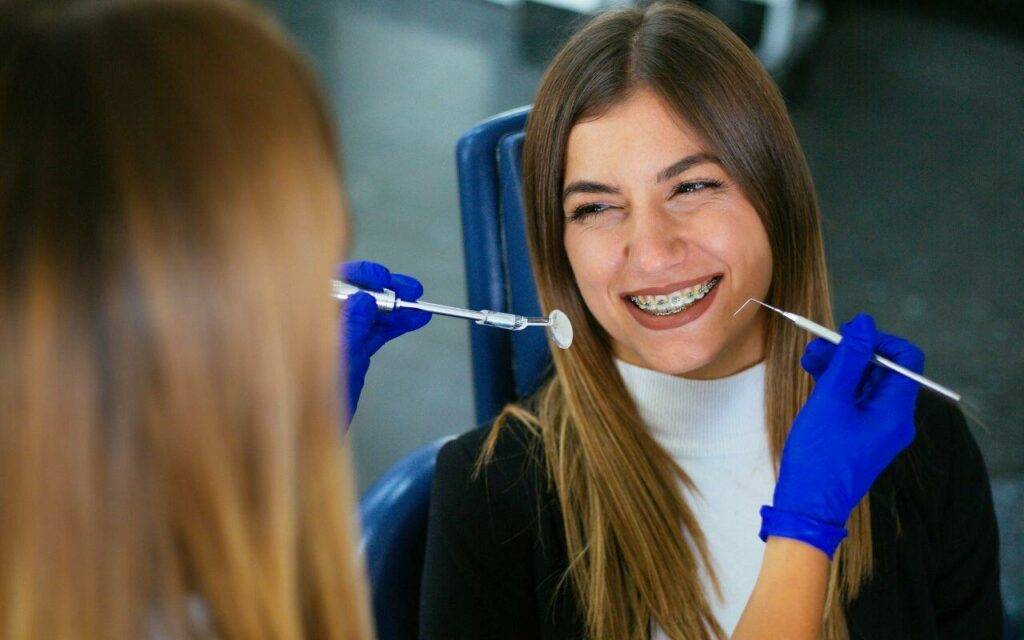In orthodontics, clear and effective communication is essential for guiding patients through their treatment options and ensuring they make informed decisions about their care.
As orthodontic technology and treatment options evolve, dental professionals must convey complex information in a way that is both accessible and engaging.
This blog explores strategies for effectively communicating orthodontic options, enhancing patient understanding, and fostering a positive treatment experience.
Establishing trust and rapport is the first step in effective communication. Building a positive relationship with patients helps lay the groundwork for successful interactions. Showing empathy by acknowledging patients’ concerns and feelings helps them feel valued and understood.
Using open-ended questions allows patients to express their goals and concerns, providing insight into their expectations and enabling you to tailor your recommendations accordingly.
Orthodontic treatments can be complex, involving various appliances and techniques. Simplifying this information is crucial for making it more accessible. Avoiding technical jargon and using straightforward language to explain treatment options can prevent confusion.
For instance, instead of using terms like “malocclusion,” explain it as “misalignment of the teeth.” Incorporating visual aids, such as diagrams, models, or digital images, can help illustrate treatment options and processes, making it easier for patients to understand how different treatments work and what outcomes they can expect.
Providing side-by-side comparisons of options, like braces versus clear aligners, helps highlight the pros and cons in terms of effectiveness, comfort, and aesthetics.
Personalizing the conversation is key to ensuring that patients receive information that is relevant to their individual needs. Aligning treatment recommendations with a patient’s specific goals—whether they are aesthetic, functional, or both—can make the information more meaningful.
Discussing how different treatments may fit into the patient’s lifestyle helps them consider how each option might affect their daily life. Addressing any concerns or preferences directly and offering solutions or alternatives that meet their needs also plays a crucial role in effective communication.
Setting realistic expectations is essential for preparing patients for their orthodontic journey. Explaining the process of each treatment option, including the duration, frequency of visits, and any required care or adjustments, helps patients understand what to expect.
Transparent information about costs and financing options is also important, as it allows patients to make decisions within their budget. Additionally, outlining any potential challenges or limitations of each treatment option—such as possible discomfort, maintenance requirements, or time commitment—ensures that patients have a clear understanding of what lies ahead.
Leveraging technology can enhance communication and patient engagement. Digital simulation tools, for instance, can show patients a preview of their potential results with different treatments, helping them visualize outcomes and make more informed choices.
Patient portals provide access to treatment information, progress updates, and educational resources, allowing patients to review details at their convenience and stay informed throughout their treatment. Interactive tools, such as treatment comparison calculators or virtual consultations, can engage patients and offer personalized information.
Encouraging an open dialogue allows patients to clarify doubts and express their preferences. Inviting patients to ask questions about their treatment options and providing thorough, understandable answers ensures they have a clear grasp of their choices.
Soliciting feedback on how the information was presented and whether there are areas for improvement can help refine communication strategies and better meet patient needs.
Effective communication in orthodontics is crucial for ensuring that patients understand their treatment options and make informed decisions. By establishing trust, simplifying complex information, personalizing discussions, setting clear expectations, utilizing technology, and fostering open dialogue, dental professionals can enhance patient engagement and satisfaction.
These strategies not only improve the patient experience but also contribute to more successful orthodontic outcomes and a well-informed patient base.


